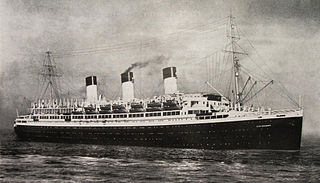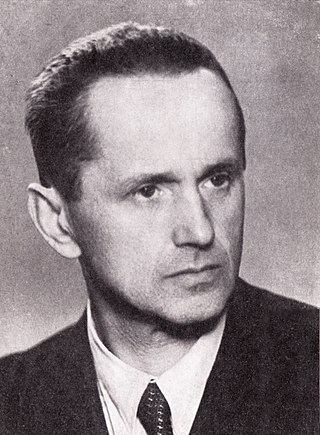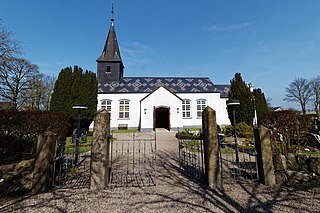
Neuengamme was a network of Nazi concentration camps in Northern Germany that consisted of the main camp, Neuengamme, and more than 85 satellite camps. Established in 1938 near the village of Neuengamme in the Bergedorf district of Hamburg, the Neuengamme camp became the largest concentration camp in Northwest Germany. Over 100,000 prisoners came through Neuengamme and its subcamps, 24 of which were for women. The verified death toll is 42,900: 14,000 in the main camp, 12,800 in the subcamps, and 16,100 in the death marches and bombings during the final weeks of World War II. Following Germany's defeat in 1945, the British Army used the site as an internment camp for SS and other Nazi officials. In 1948, the British transferred the land to the Free Hanseatic City of Hamburg, which summarily demolished the camp's wooden barracks and built in its stead a prison cell block, converting the former concentration camp site into two state prisons operated by the Hamburg authorities from 1950 to 2004. Following protests by various groups of survivors and allies, the site now serves as a memorial. It is situated 15 km southeast of the centre of Hamburg.

SS Cap Arcona, named after Cape Arkona on the island of Rügen, was a large German ocean liner, later a ship of the German Navy, and finally a prison ship. A flagship of the Hamburg Südamerikanische Dampfschifffahrts-Gesellschaft, she made her maiden voyage on 29 October 1927, carrying passengers and cargo between Germany and the east coast of South America, and for a brief period of time she was the largest and fastest ship on the route, until one month later she was surpassed on the same Europe-South America route by the Italian liner MS Augustus (1926).

Mauthausen was a Nazi concentration camp on a hill above the market town of Mauthausen, Upper Austria. It was the main camp of a group with nearly 100 further subcamps located throughout Austria and southern Germany. The three Gusen concentration camps in and around the village of St Georgen/Gusen, just a few kilometres from Mauthausen, held a significant proportion of prisoners within the camp complex, at times exceeding the number of prisoners at the Mauthausen main camp.

Jan Michał, 6th Chevalier de Weryha-Wysoczański-Pietrusiewicz, known as Jan de Weryha-Wysoczański, is a Polish sculptor, process artist and concrete artist. He was born in Gdańsk. From 1971 to 1976 he studied sculpture at the Academy of Fine Arts in Gdańsk. Since 1981, he has been living and working in Hamburg. In 1998, he won the 1st prize, the Prix du Jury, awarded by the Ministry of Culture of the Grand Duchy of Luxembourg at the 'Salon de Printemps 98', Luxembourg. In 1999, he created a monument in memory of the deportees of the 1944 Warsaw Uprising for the memorial to the victims of the Neuengamme Nazi concentration camp at Hamburg, in 2012 a memorial for the Nazi forced labourers in Hamburg-Bergedorf. He was represented by Galerie Kellermann in Düsseldorf. In 2022 de Weryha-Wysoczański was awarded in Vienna the Golden Owl culture award in the category Visual Arts.

Aufseherin was the position title for a female guard in Nazi concentration camps. Of the 50,000 guards who served in the concentration camps, training records indicate that approximately 3,500 were women. In 1942, the first female guards arrived at Auschwitz and Majdanek from Ravensbrück. The year after, the Nazis began conscripting women because of a shortage of male guards. In the context of these camps, the German position title of Aufseherin translates to (female) "overseer" or "attendant". Later female guards were dispersed to Bolzano (1944–1945), Kaiserwald-Riga (1943–44), Mauthausen, Stutthof (1942–1945), Vaivara (1943–1944), Vught (1943–1944), and at Nazi concentration camps, subcamps, work camps, detention camps and other posts.

Richard Baer was a German SS officer who, among other assignments, was the commandant of Auschwitz I concentration camp from May 1944 to January 1945, and right after, from February to April 1945, commandant of Mittelbau-Dora concentration camp. Following the war, Baer lived under an assumed name to avoid prosecution but was recognized and arrested in December 1960. He died in detention before he could stand trial.

Kazimierz Damazy Moczarski was a Polish writer and journalist, an officer of the Polish Home Army. His book Conversations with an Executioner, recounted a series of interviews with Nazi war criminal Jürgen Stroop, a fellow inmate of the UB secret police prison under Stalinism, who was soon to be executed. Thrown in jail in 1945 and pardoned eleven years later during Polish October, Moczarski spent four years on death row (1952–56), and was tried three times as an enemy of the state while in prison.

Wysoczański plural: Wysoczańscy is the surname of a Polish szlachta (nobility) family, which traces its lineage back to Comes Vane Valachus who was granted land in 1431 by Polish King Ladislaus II. Jagiełło. Hereditary Chevaliers of Galicia (“Ritter”) since 1782.

Ladelund is a municipality in the district of Nordfriesland, in Schleswig-Holstein, in northern Germany.

The Bullenhuser Damm School is located at 92–94 Bullenhuser Damm in the Rothenburgsort section of Hamburg, Germany – the site of the Bullenhuser Damm Massacre, the murder of 20 children and their adult caretakers at the very end of World War II's Holocaust – to hide evidence they were used as human subjects in brutal medical experimentation.

Andrzej Szczypiorski was a Polish novelist and politician. He served as a member of the Polish legislature, and was a Solidarity activist interned during the military crackdown of 1981. He was a secret police agent in the 1950s.
Chevalier Rafał Hugon Maria de Weryha-Wysoczański-Pietrusiewicz is a Polish art historian, genealogist and writer, who was a representative of the auction house Sotheby's.

Neuengamme is a quarter of Hamburg, Germany, located in the Bergedorf borough, near the river Dove Elbe. In this rural quarter, part of the Vierlande, the population in 2020 was 3,711.

The memorial to gay and lesbian victims of National Socialism is a monument in Cologne, Germany, dedicated to the gay and lesbian victims of the Nazis.

Gertrud Elli Heise was a female guard and later, SS overseer at several concentration camps during the Second World War. Heise was born in Berlin, Germany. She was tried for war crimes in 1946.

Anneliese Kohlmann was a German SS camp guard within the Nazi concentration camp system during World War II, notably, at the Neuengamme concentration camp established by the SS in Hamburg, Germany; and at Bergen-Belsen. She was tried for war crimes at the Belsen Trial in Lüneburg in 1946.
The following is a timeline of the history of the city of Bremen, Germany.

Basil, 1st Chevalier de Weryha-Wysoczański-Pietrusiewicz was a Polish wholesale merchant, landowner, town property owner and philanthropist from Odessa.
The Husum-Schwesing subcamp in the Schwesing district of Engelsburg, about five kilometres northeast of Husum, became a satellite of Neuengamme concentration camp on 26 September 1944 and was occupied by prisoners in connection with the construction of the so-called Frisian Wall (Friesenwall). Some 2,500 people from 14 countries were incarcerated here in autumn 1944; 297 prisoners died as a result of forced labour, malnutrition and abuse. The camp was closed on 29 December 1944.

















